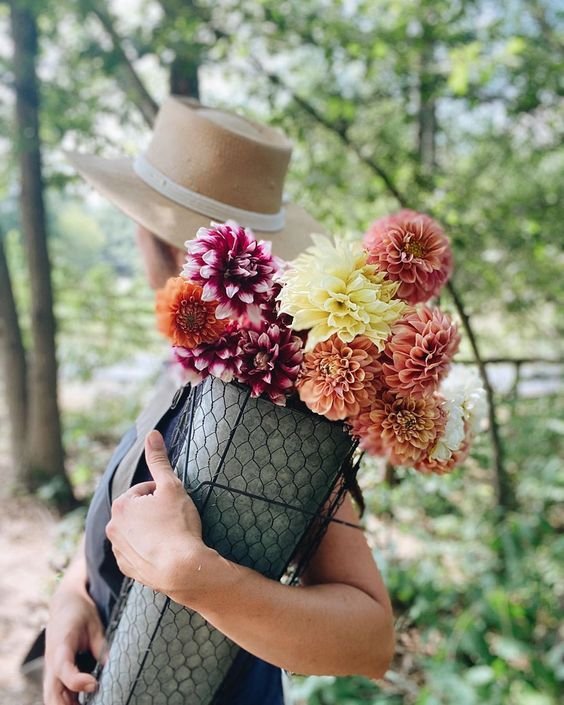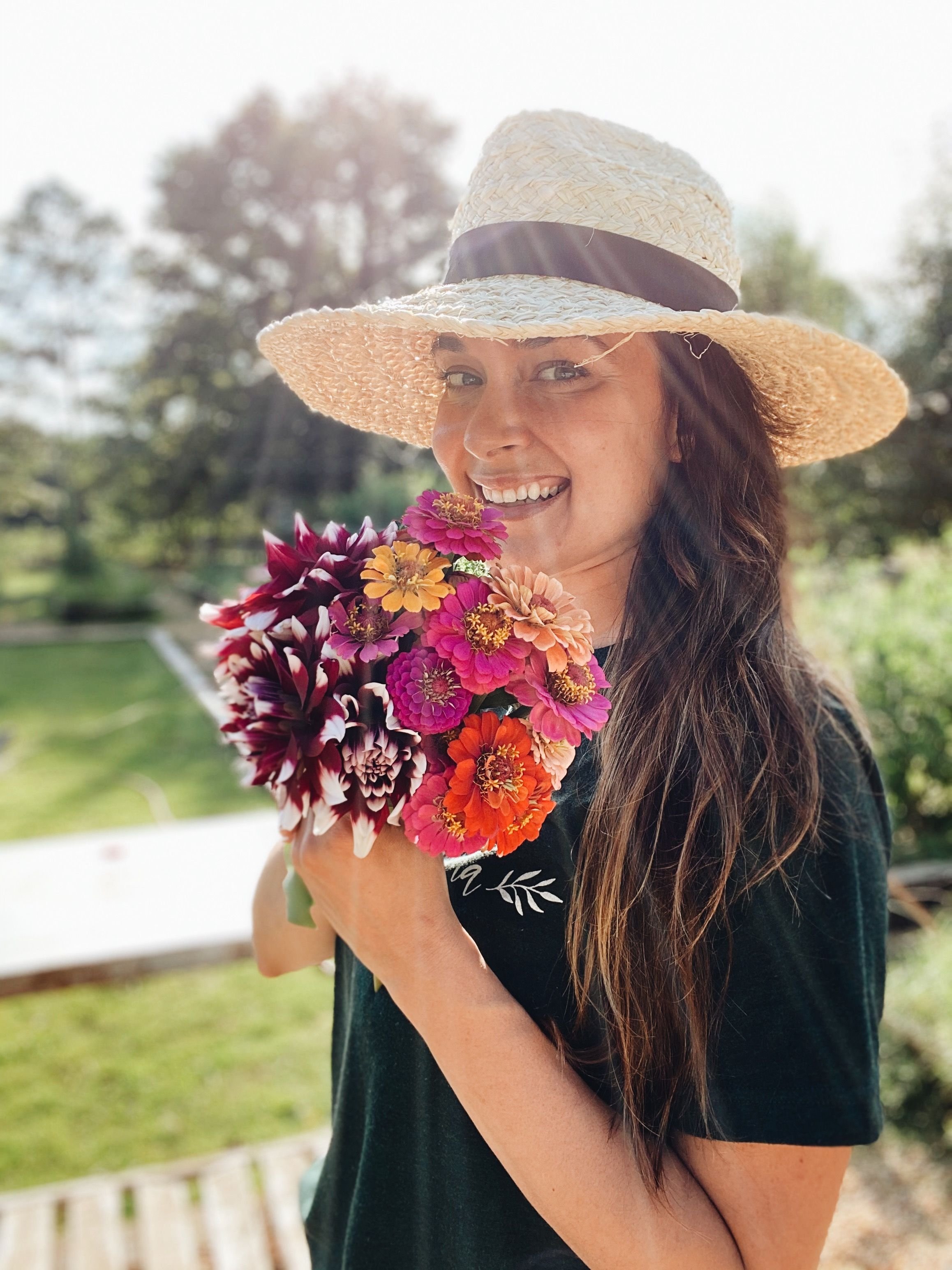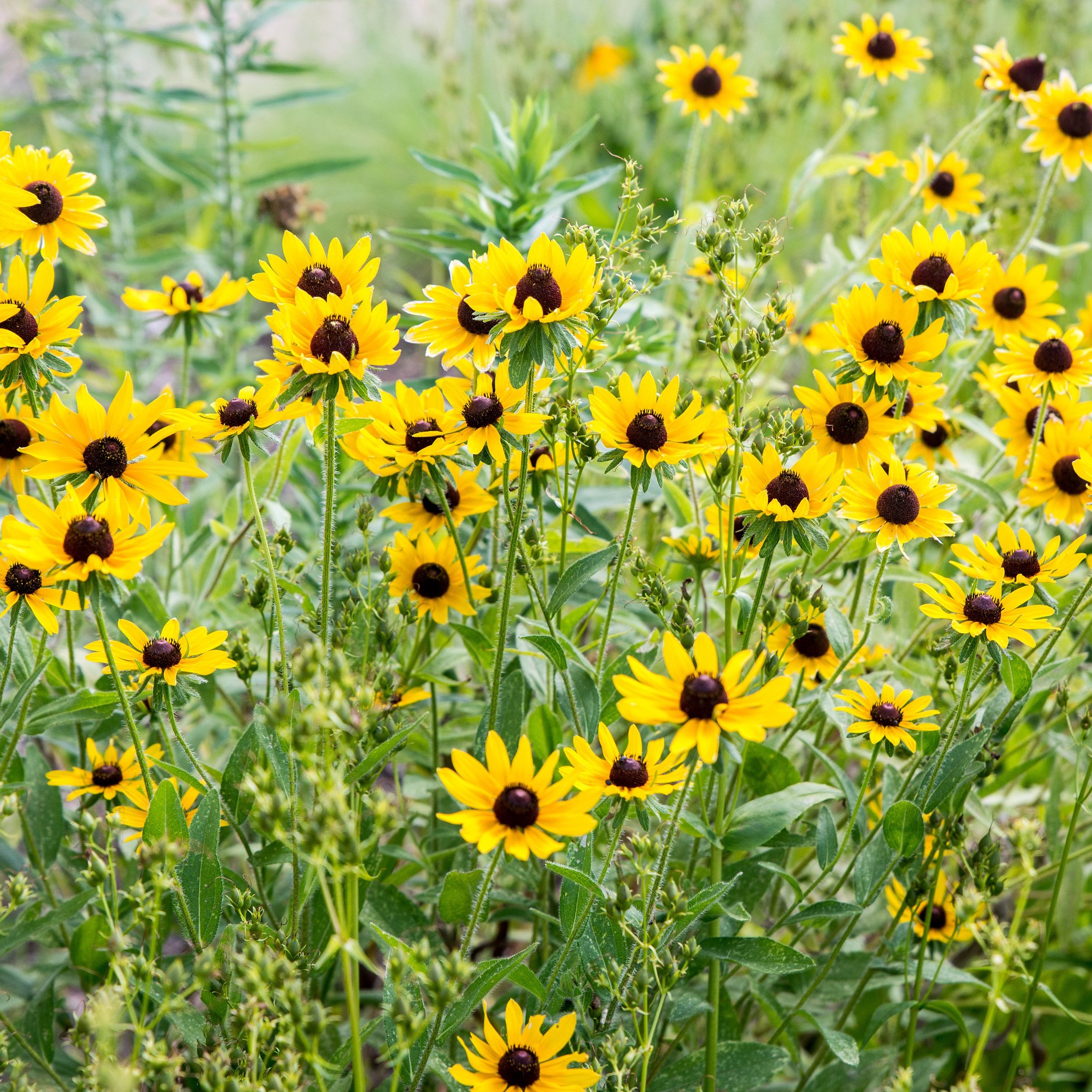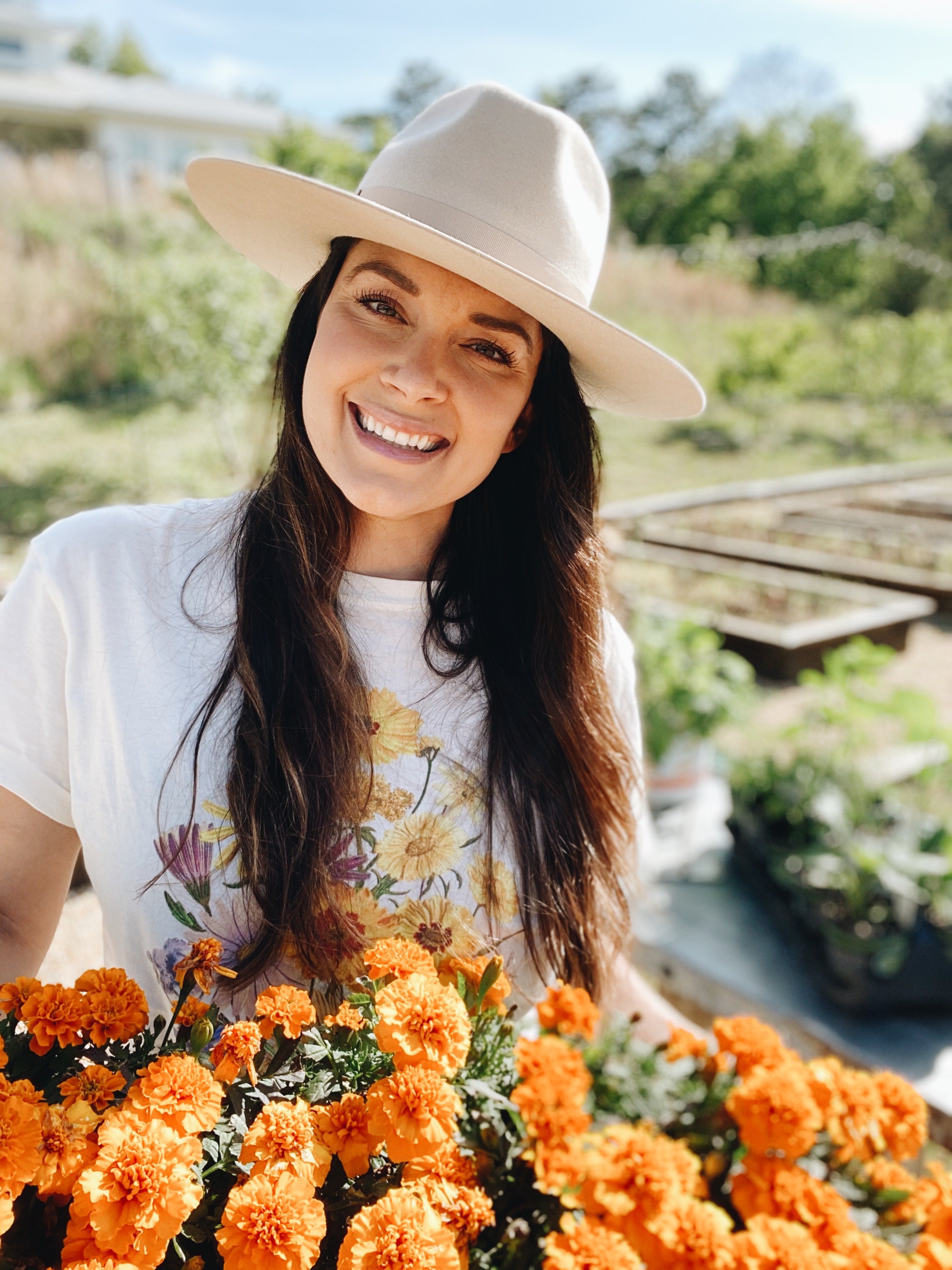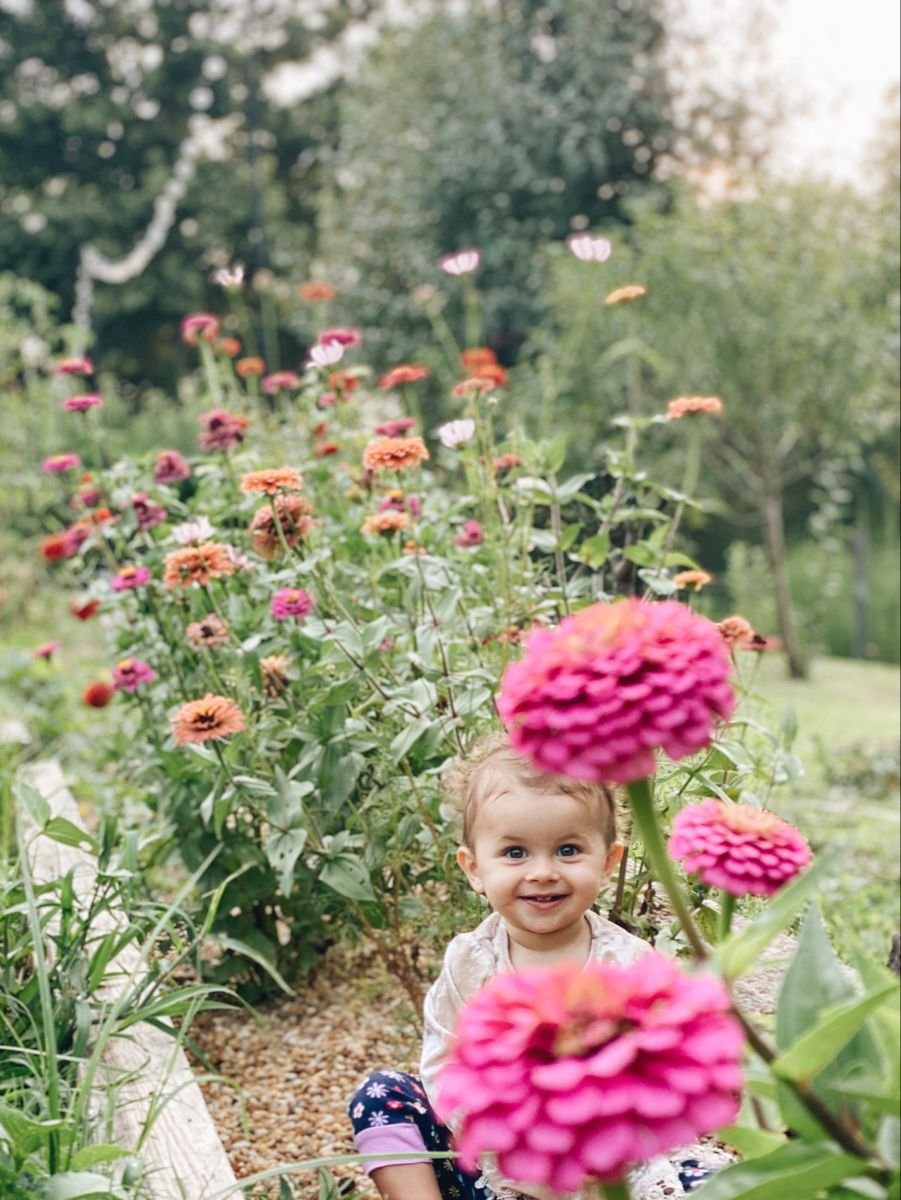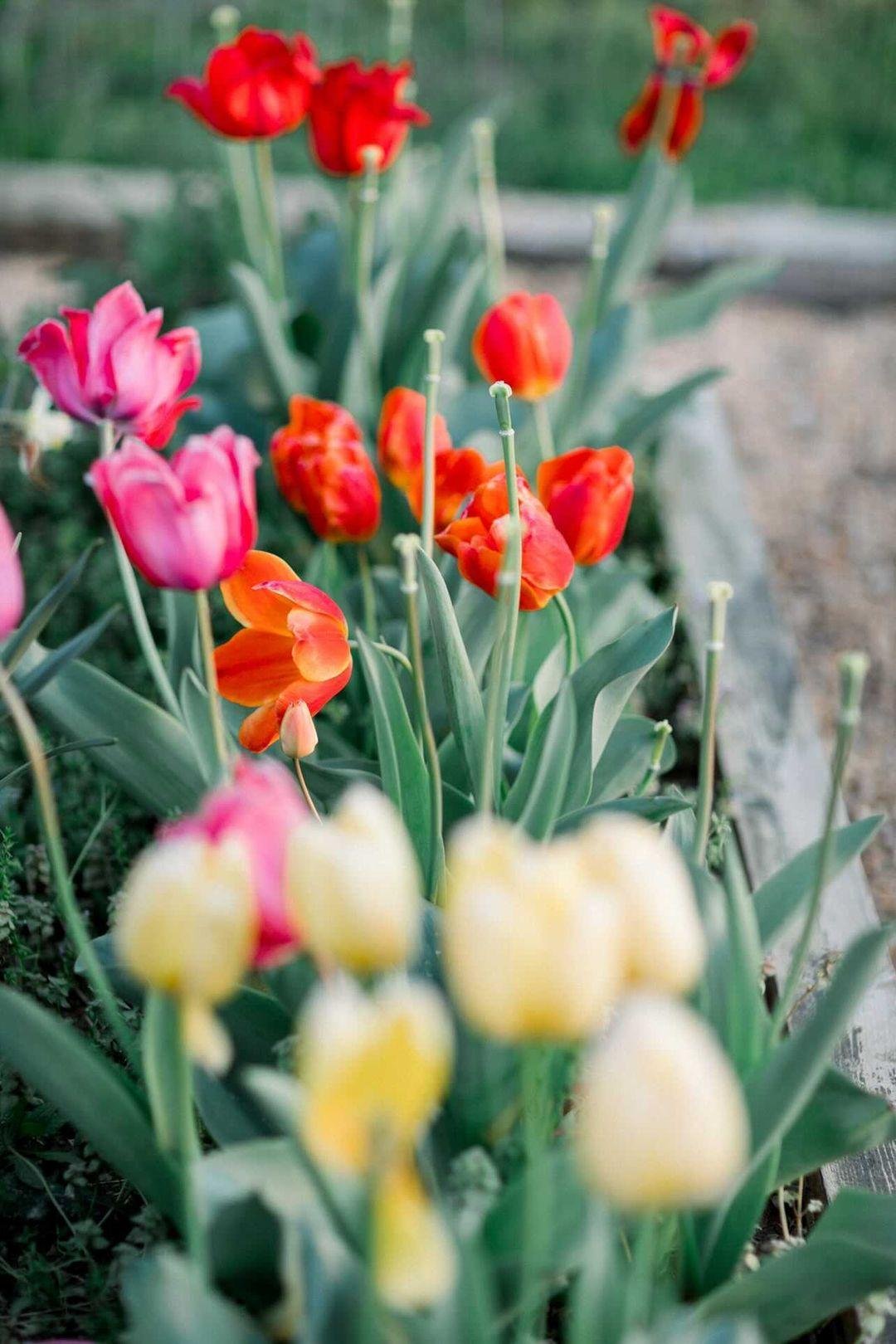What are the easiest flowers to grow? These are my top 12 easiest for beginners!
One of my favorite things about spring and summer has to be the blooming flowers! Flowers bring everything to life and make me smile! I love walking around in my garden and seeing the fruits (flowers) of my labor.
And even more so when I can pick an array of assorted flowers to make a beautiful floral arrangement for our home. Not to even speak about all the fantastic smells that uplift my mood!
If you think a gorgeous flower garden is only for those with green fingers, you are mistaken, my friend. You, too, can have a beautiful flower garden with these easy-to-grow flowers when following a few basic rules!
Planting Flowers For Beginners
Understanding basic flower growing conditions and choosing easy growing varieties suited to your zone will ensure a lively garden all summer long.
Here are my tips for bountiful blooms:
Determine if the flowers are annuals or perennials. Annuals will only flower for one season and need to be replaced every spring. They add a pop of color and are great to fill your garden because most annual plants bloom longer and are more plentiful. Perennials will return reliably year after year and form the backbone of your garden. They also require lower maintenance.
Choose flowers (perennials and annuals) native to your area which will thrive in your USDA Hardiness Zone. Your local garden center or garden websites would be able to provide this info on flower plants. If flowers are perennials, make sure they'll survive winters in your zone.
Consider their sun requirements and plant them in the right spots. The plant tag will usually indicate this. Full sun would mean 6 hours or more per day, and part sun 3 -6 hours. Shade-loving plants require only around 3 hours of sun per day. If you get it wrong, flowers that like shade will struggle in the hot afternoon sun, and sun lovers will not bloom in the shade. Assess the areas where you want to plant flowers and decide which will work best.
Keep your flowers well watered when you first put them in the ground, for at least a few weeks, and during dry spells (no rain for a week). After this, they need around 1" water per week if it hasn't rained. When planting flowers in pots, ensure there are drainage holes so their roots won't stay soggy.
When your flowers are blooming, they need a lot of energy. Not only from the sun but from supplementary flower food also. You can use specific plant food, i.e., rose food, or a general organic fertilizer or compost.
Ok, so what are the easiest flowers to grow? Down below are my top 12 flowers for beginners!
My Top 12 Easiest Flowers to Grow From Seed
1. Black-eyed Susans
Black-eyed Susans are popular native flowers that are not fussy and work in any landscape and have a long bloom time. Depending on your climate and zone, they will start to bloom from mid-late summer until the beginning of winter and sometimes even until Christmas.
Make sure to check the plant tags because some varieties are perennials. In contrast, others only last two years (biennial), so they're treated as annuals and replanted every year.
Plant Black-eyed Susans in Spring in full sun, well-drained soil, and water when the top of the soil has dried.
Birds, butterflies, and hummingbirds will eat the seeds and sip nectar from the plants!
black eyed susans - Photo credit: Thespruce.com
2. Calendulas
Calendulas are very easy annuals to grow and maintain. They are also known as Pot Marigolds, but they are different from the common marigolds. Their traditional yellow and orange colors are the most common, although you can get other color seeds.
Calendulas will grow well in beds and containers, and they multiply too, filling empty areas fairly quickly!
Direct sow the seeds in full sun to part shade spots in late spring and expect blooms from June to October. Always keep the soil moist to encourage blooming, and deadheading the buts will encourage even more blooming.
The flowers and leaves are edible, the petals can be used to make natural yellow fabric dye, and the bees love them too!
calendulas - Photo credit: goodhousekeeping.com
3. Cosmos
Cosmos have to be one of my favorite, must-have annuals! With their shades of pink, magenta, white, yellow, and orange, these daisy-like flowers look so beautiful in the garden and make a gorgeous floral arrangement.
Cosmos will grow 18-60 inches tall depending on the variety and bloom from spring to fall. They don't mind hot, dry locations and are ideal for low-maintenance gardens.
Cosmos prefer full sun and evenly moist, well-drained soil but will also tolerate poor, sandy soil, making them great for dryer regions.
Direct sow the seeds outdoors before your last spring frost date and lightly cover them with soil. The seeds will start to sprout in one to three weeks.
Cosmos are fantastic as companion plants, and they help to repel mosquitos.
You can learn more here on how companion planting in the garden can help with natural pest control.
Beautiful yellow cosmos from our garden
companion planting for natural pest control among our veggies
4. Dianthuses
Dianthuses are perennials or annuals, depending on the variety and your garden zone, so always check the plant tag. Once they are settled, they require no maintenance as long as they get watered.
Their delicate flowers come in shades of white, hot pink, lavender, deep purple, and even bi-colored varieties, and they have a lovely scent!
Direct sow dianthus when all chance of frost has passed, and they will start to bloom from May to October. They also don't mind the heat, so they won't struggle during scorching hot days.
Dianthus needs at least 6 hours of sun a day, so full sun or partial shade spots in your garden will work well and they prefer fertile, well-drained soil that is alkaline.
dianthuses - Photo credit: gardenia.net
5. Marigolds
One of the easiest flowers ever has to be marigolds! They are a sturdy old-fashioned favorite.
Marigolds are annuals, will survive the heat and dry spells, and will bloom nonstop well into fall until the first hard frost. They differ in height from six inches to two feet and come in various colors, including yellows, oranges, and creamy whites.
Marigolds will do well in beds and pots and need full sun to thrive. After the last winter frost, they can be sown directly into your garden beds.
I love that they're inexpensive, sold just about everywhere and can be used as a natural pest controller in the garden!
beautiful marigolds
6. Nasturtiums
Nasturtiums are annuals and come in bush forms and climbing vines and will provide beautiful color in your garden from May until September. Once established, nasturtiums will actually thrive on neglect and can be left alone.
There are three reasons I love nasturtiums! They attract beneficial pollinators; secondly, they are great for companion planting to deter pests; and thirdly, they are edible! They add a zesty addition to a salad, containing vitamin C and other nutrients.
Nasturtiums are easy to grow from seeds. Let the seeds soak overnight, then rub a file against the seed to encourage quicker germination before sowing. Plant in full sun and well-drained soil.
nasturtiums - photo credit: birdsandblooms.com
7. Pansies
Another classic garden flower with a variety of colors! Pansies make excellent container plants but will also look pretty around the borders of your garden beds.
Pansies are predominantly annuals, but some varieties will live longer. In zones 6-10, they can grow as perennials. Pansies also prefer cooler weather, so some varieties are grown as winter annuals in warm climates.
Pansies will thrive with little care under the right conditions, such as rich, well-drained soil, in full sun or partial shade, and with regular watering.
pansies - photo credit: dengarden.com
8. Petunias
Petunias are an old favorite for many reasons: They come in various colors, have a long blooming period, and are very affordable! They look gorgeous in containers and hanging baskets, especially when they trail over the sides.
Petunias don't tolerate frost, so they are planted as annuals in most regions. It's best to plant them in late spring or early summer, and you can expect blooms through summer until late fall when the frost arrives.
They prefer full sun for more blooms but can tolerate some shade. Plant in rich, well-drained soil, feed them with a fertilizer formulated for flowering plants every 3 weeks, and water regularly.
petunias - photo credit: almanac.com
9. Sunflowers
What would summer be without some cheery sunflowers?! They are some of my favorite cut flowers to have in my kitchen.
The big yellow varieties with brown centers are the best known, but there are other varieties too, including orange, red, brown, and bicolored blooms.
Sunflowers are easy to grow from seeds, whether in pots or your garden beds, as long as they have plenty of sun. However, they don't like to be transplanted, so it's best to sow them after the last frost date directly where you want them. They will sprout about a week after planting but only bear flowers at the earliest in July.
They don't need much care, except for moist soil. They are also annuals, so you'll need to replant sunflowers every year. Oh, and of course, the bees love them!
among the beautiful sunflowers
10. Sweet Alyssum
Sweet alyssum flowers come in shades of pure white, pink, and purple and look fantastic when planted in baskets and window boxes or cascading over a wall. They can also soften the edge of a bed or a walkway.
They have a delicate scent, and pollinators adore them.
Sweet Alyssums will grow about 4-6" tall, prefer full sun but can handle some shade, and will even survive a light frost. Water regularly and fertilize in 3-4 week intervals during the season.
sweet alyssum - photo credit: gardenerspath.com
11. Sweet Peas
Sweet peas are straightforward to grow, smell divine and come in stunning colors. They create a beautiful wall of color and make a statement.
Plant them in garden beds or pots and train them up a frame for a beautiful flower display as they bloom all along their length.
Sweet peas are easy growers and prefer full sun but will do well in shady spots too. They require well-drained, but moisture-retentive soil, so frequent watering is necessary.
Direct sow outdoors a few weeks before your last frost and when the soil is workable, around March to May. Once the vines sprout, you can expect blooms within 30 - 45 days, all through October.
Start feeding your sweet peas an organic fertilizer when the flower buds appear. Regular picking encourages more flowers to form, so keep picking those blooms for the vase.
sweet peas - photo credit: gardeningknowhow.com
12. Zinnias
Zinnias are a garden classic and have the most gorgeous colors! From red, yellow, orange, chartreuse, pink, lavender, to white - these annuals will ensure a beautiful blooming show during summer.
Their heights vary from 6" to 3 feet and can be used as edging plants, barriers, or privacy screens.
Zinnias are effortless flowers to grow in beds or pots. Just direct sow in the ground about a one-eighth inch deep after your last frost date, and they will sprout within one week of planting.
Zinnias like rich, well-drained soil that is evenly moist and requires full sun. Butterflies love them and you will too!
little ava among our zinnias!
Dahlias, Tulips, Roses, Daffodils, and Others
We also have many dahlias in our garden, which I absolutely adore. And right now our tulips are in full bloom! I have also a few rose bushes around the homestead and of course other favorites like lavender and daffodils.
These flowers, like dahlias and roses, require a little extra TLC and other factors such as bulb storing over winter. Some, like lavender, are also influenced by your climate and type of soil and won’t thrive as easily with very little maintenance.
But, when you feel your fingers are getting greener, don’t be afraid to try new exciting blooms! The spectacle is amazing and worth all the work!
Once you get the hang of it and once your flowers have settled, growing flowers is much easier than it seems! May your garden be full of beautiful blooms this coming spring and summer!
Love, Annette xx
Learn more here about flowers:
PIN FOR LATER

